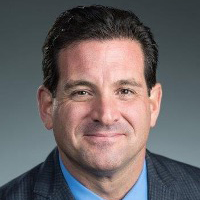It’s December, and you realize you’ll owe a hefty sum to the IRS. Instead of writing that check to Uncle Sam, what if you could funnel a big chunk of that money into your own retirement savings and get a tax break for doing so?
The final quarter is a critical window for CPAs who are business owners. Many retirement plans must be set up or contributions made by December 31 to count for the current tax year, so there’s an urgency to act. Think of it as the CPA’s version of an “annual clearance sale” on taxes – every dollar you contribute to a qualified retirement plan before the deadline could shrink your taxable income for 2025 up to IRS limits. The goal isn’t just to save taxes, though. It’s also to build your own retirement security.
Why Retirement Plans are a CPA’s Best Friend at Tax Time
Retirement plans are one of the most powerful tax planning tools available to business owners. Contributions to tax-advantaged retirement accounts are generally tax-deductible, meaning they reduce your current-year taxable income dollar-for-dollar (when made with pre-tax dollars). For a high-earning CPA in the 35% federal tax bracket, a $1 contribution could trim $0.35 off your federal tax bill, not to mention potential state tax savings. Wouldn’t you rather pay yourself (in the form of retirement savings) than pay the IRS?
Beyond the immediate tax break, these contributions grow tax-deferred. This means investment earnings aren’t taxed each year, so your retirement nest egg can compound faster. Later, in retirement, you’ll pay tax on withdrawals (if it’s a pre-tax account), presumably at a lower bracket, or not at all if you’ve utilized Roth features for tax-free growth. In short, using retirement plans strategically allows you to smooth out your lifetime tax burden. You take deductions in high-earning years and possibly pay taxes when your rate is lower. And if you play your cards right with Roth options, you might even pay taxes now and have zero tax in retirement on those funds.
For a CPA who owns their firm, there’s an extra incentive: you’re in control of the plan. Unlike a salaried employee stuck with whatever 401(k) their company offers, you get to choose the plan type that fits you (and your staff, if you have employees). This flexibility allows you to design a plan that maximizes your contributions up to the legal limits while still benefiting your team. It’s truly a win-win: you reward yourself and any employees with retirement savings, and Uncle Sam rewards you with a lower tax bill.

Which plan fits your CPA practice?
Who it suits: Solo CPAs or very small teams with variable profits.
2025 limit: Up to 25% of comp, capped at $70,000 total. Employer‑funded only.
Admin: Very low. Contributions 100% vested; same % for eligible staff.
Timing: Can often be established & funded by tax filing deadline (incl. extensions).
Roth/catch‑up: Roth‑SEP may be available (custodian dependent); no catch‑ups.
Who it suits: Practices with a handful of employees.
2025 deferral: $16,500 (+$3,500 catch‑up; age 60–63 special catch‑up $5,250).
Employer: Match up to 3% or 2% nonelective for each eligible employee.
Admin: No annual testing, no Form 5500—low cost.
Timing: Employee deferrals must be elected and funded in‑year.
Who it suits: High‑income owners (often 50s–60s) wanting to contribute far above DC limits.
Potential 2025 contributions: Roughly $100k–$300k+ depending on age/benefit design.
DB cap (2025): Max annual pension benefit of $280,000 at retirement age.
Admin: Actuary‑driven; annual funding commitment.
Timing: Year‑end plan design matters; funding rules apply.
SEP IRA: Simplicity with Significant Deductions
The Simplified Employee Pension (SEP) IRA is a popular choice for CPA firm owners, particularly those with few or no employees. A SEP is essentially a supercharged IRA for employers: easy to administer, with much higher contribution limits than a normal IRA. It’s all employer-funded. Employees themselves don’t contribute to a SEP; instead, the company makes contributions on behalf of each eligible person (including the owner).
A SEP IRA allows contributions up to 25% of an employee’s compensation, up to $70,000 for 2025 (this dollar cap is the same overall limit as a 401(k) ). Only the employer contributes. If you’re self-employed, “25% of compensation” works out to roughly 20% of your net self-employment income (there’s a calculation for SE tax, etc.), but effectively you can think of it as up to 25% of what you pay yourself. Importantly, you don’t receive a separate employee deferral, as in a 401(k); the SEP limit is a single bucket. So a sole proprietor CPA earning $200,000 could potentially put around $40k into a SEP for herself (20% of $200k, roughly, since 25% of net business earnings after adjustments). Higher income allows for more, up to the maximum of $70k.
If you have employees, the percentage of salary you contribute for yourself must also be contributed for them. For example, if you decide on 10% of pay, you have to give every eligible employee 10% of their pay into their SEP IRAs as well – so you’ll want to budget for that if applicable. The contributions are immediately 100% vested for employees (they own it right away).
Contributions to a SEP IRA are tax-deductible business expenses. They reduce your business’s taxable income (or flow through as a deduction on your Schedule C or K-1). So if our sole proprietor above puts $40k into a SEP, that’s $40k off her taxable income. The beauty of a SEP is in its flexibility: you aren’t locked into a contribution every year. In a high-profit year, you can contribute the max and enjoy a big tax break. In a lean year, you can contribute less or nothing at all. You have until your tax filing deadline, including extensions, to fund a SEP for the prior year, so many CPAs actually figure out their maximum deduction during tax prep and make a prior-year SEP contribution by, say, April 15 or October 15. This can be a great last-minute tax reduction strategy.
What about Roth or catch-up? Historically, SEP IRAs were pure pre-tax, and all contributions were deductible and would be taxed on withdrawal. However, as mentioned, SECURE 2.0 now allows SEP IRAs to offer a Roth SEP option. This means you could designate your contribution as Roth (after-tax). Few brokerages have implemented Roth SEP features yet, but it’s on the table. A Roth SEP contribution would not reduce your current taxes (since you’d pay tax on that money now), but it would grow tax-free and be tax-free on withdrawal.
Many CPA owners aiming to maximize tax efficiency in the current year will stick to pre-tax SEP contributions, but it’s nice to know you could diversify with Roth for long-term benefits. As for catch-up contributions – since employees don’t contribute to a SEP, the concept of catch-up (which applies to employee deferrals) doesn’t apply to SEP IRAs. If you’re over 50, you don’t get to put more into the SEP beyond the normal limit; you’re already likely hitting the max based on the percentage of comp. (If you need to save more and are over 50, that might be a sign to consider a 401(k) or a combo plan instead.)
SEP IRAs shine for small practices with variable profits or that want low admin overhead. They are extremely easy to set up (you can literally fill out a form with a brokerage and you’re done) and have virtually no filing requirements or complex testing. If you’re a solo CPA or have 1–2 employees and want to contribute to everyone’s retirement in profitable years, a SEP is a very convenient option. It’s also great if you missed the end-of-year deadline for a Solo 401(k), since you can establish and fund a SEP up until the tax deadline, which provides more flexibility. However, if you want to contribute the absolute maximum and are okay with a bit more paperwork, the Solo 401(k) often allows you to put away more at the same income level (due to the employee deferral).

Turn a big IRS payment into a bigger retirement contribution—before the clock runs out.
Qualified plan dollars contributed by 12/31 can reduce your 2025 taxable income up to IRS limits—while funding your future.
SEP • SIMPLE • 401(k) • Cash Balance/DB
Elect deferrals/fund where required by 12/31
Lower this year’s taxable income; grow tax-deferred
Note: SEPs can often be established and funded by your tax filing deadline (including extensions). Educational content—verify specifics with your tax professional.
SIMPLE IRA: A Straightforward Plan for Small Teams
For CPA practices with a handful of employees, a SIMPLE IRA can live up to its name by providing a simple retirement plan solution. The Savings Incentive Match Plan for Employees (SIMPLE) IRA is designed for small businesses (up to 100 employees) and offers an easy, low-cost way to let employees defer salary into retirement while the employer adds a small contribution. It has lower contribution limits than a 401(k) or SEP, but it also comes with fewer rules.
In a SIMPLE IRA, employees can elect to defer money from their paychecks into the plan, similar to a 401(k), but the annual limit is a bit lower: $16,500 per employee in 2025. Employees aged 50 or older can contribute an extra $3,500 catch-up contribution, for a total of $20,000. (SECURE 2.0 change: if the employee is 60–63 years old, the catch-up limit is increased to $5,250, meaning potentially $21,750 in their final push years.) Employers must contribute in one of two ways: either match each employee’s contributions dollar-for-dollar up to 3% of their salary, or contribute a flat 2% of each eligible employee’s salary, whether or not the employee contributes.
For employees (including you if you participate as an employee of your own firm), salary deferrals into a SIMPLE IRA are pre-tax, reducing taxable wages just like a 401(k) deferral. The employer contributions are also tax-deductible for the business. From your perspective as the owner, a SIMPLE IRA can reduce your personal taxable income by the amount you defer, and the matches you pay out to staff (and yourself) are a business expense. The limits being lower means the maximum reduction isn’t as high as a 401(k); for instance, if you’re over 50, deferring $20,000 saves maybe ~$6-7k in federal taxes if in the 32% bracket. Not bad, but compare that to $31,000 you could defer in a 401(k) at age 50+, plus profit sharing. Thus, many owners consider SIMPLE a starter plan until they’re ready to upgrade to a 401(k). However, the cost trade-off is that a SIMPLE has virtually no administrative expenses or testing. There’s no annual IRS testing for discrimination, no Form 5500 filing requirement – it truly is simple to run. This can be attractive for very small firms.
In essence, a SIMPLE IRA offers ease and some tax savings, though with lower contribution ceilings. It can still significantly reduce a practice owner’s taxes – for example, an owner under 50 could defer $16,500, saving perhaps $5k+ in taxes, and match herself 3% on, say, a $150k salary (another $4,500 contribution, deductible to the business). It’s not the maximum you could possibly do, but it’s simple and effective. And remember, the goal is to get started with something. If a SIMPLE is what gets you and your team saving now, it’s far better than procrastinating on setting up a more complex plan and doing nothing in the meantime.
Defined Benefit and Cash Balance Plans
In a traditional DB plan, you promise participants (yourself and any employees) a set benefit at retirement (e.g., “$X per month for life” starting at age 65). Contributions each year are calculated by an actuary to fund that future benefit. In a Cash Balance plan, a type of DB plan often used by small businesses, the benefit is expressed as an account balance rather than a monthly pension, making it more intuitive. You might, for instance, promise yourself a “theoretical” account credit of 5% of pay plus interest each year, which ends up targeting a big balance by retirement. The key point is that the contribution is based on reaching a certain future balance or benefit, allowing older business owners to contribute extremely large amounts relative to younger individuals. The IRS sets a limit on the maximum benefit – for 2025, the annual benefit a DB plan can promise is capped at a pension of $280,000 per year at retirement age.

Quick tax-math: what pre-tax contributions can save
At a 35% federal bracket, every $1 pre-tax reduces your federal bill by $0.35 (state taxes may add more savings).
| Pre-tax contribution | Estimated federal tax saved (35%) | Context |
|---|---|---|
| $10,000 | $3,500 | “Top off” year-end deferrals |
| $40,000 | $14,000 | Solo CPA SEP example at ~$200k income |
| $70,000 | $24,500 | Near the defined-contribution ceiling |
| $200,000 | $70,000 | Cash Balance/DB sized contribution |
Illustrative only. Actual savings depend on your bracket, state taxes, plan rules, and compensation limits.
Unlike the fixed limits of a 401(k) or SEP, DB plan contributions are actuarially determined based on factors like age, years until retirement, and assumed investment returns. However, to provide a ballpark estimate: contribution limits for cash balance/DB plans in 2025 can range from approximately $100,000 per year to over $ 300,000 per year for a single owner, depending on age and income. For example, a 55-year-old CPA owner might be able to contribute on the order of $150,000 for herself in a cash balance plan (in addition to a 401(k)) if she has the profits to support it. A 60-year-old could potentially contribute $250,000 or more per year. These figures dwarf the $70k limits of defined contribution plans.
Taxes are where DB plans shine. Contributions are 100% tax-deductible to the business and do not count against your $70k DC plan cap. They are placed into a trust, grow tax-deferred, and can later be withdrawn (typically as distributions in retirement, taxed as income). If you’re in a high bracket now and expect to be in a lower bracket later (which is common when large W-2 or K-1 income stops in retirement), this arbitrage is golden. For instance, suppose you contribute $200,000 at age 60 to a cash balance plan. That might save roughly $74,000 in federal taxes immediately if you’re in the top ~37% bracket, plus state tax savings.
Over the course of 5 years, you could potentially defer over a million dollars into the plan, drastically reducing your current tax bills. The funds can then provide a secure pension or be rolled into an IRA at retirement. Important: With great power comes responsibility – DB plans require annual contributions. You set a target benefit, and you’re committing to fund it each year (with some flexibility, but generally it’s not optional like a SEP). This means you need consistent high profit and cash flow to sustain the plan. If your firm’s income is volatile, a DB plan can be risky (underfunding or needing to contribute in a down year). That’s why it’s often used when the owner is later in career, earnings are high and relatively stable, and there’s a desire to play catch-up on retirement savings.
A defined benefit or cash balance plan is best suited for high-income owners, typically in their 50s or 60s, who want to save significantly more than the DC limits. It’s especially attractive if you’re a solo practitioner or have just a few employees (and you’re willing to contribute to their benefits as well). You can include employees in the plan, but that will require funding their benefits as well, which can get expensive. Often, plan designers will integrate a 401(k) and DB and allocate a portion to staff via the 401(k) profit-sharing and a modest amount in the DB, while the owner gets the lion’s share in the DB. Because these plans are complex, you’ll need an actuary or third-party administrator to design and run them, which means higher admin costs. However, remember the startup credit: you can receive up to $5k/ year in credit to offset those fees during the first three years.
Deferred Compensation Growth Calculator
See how deferring compensation could impact your long-term financial picture
Deferred Compensation Analysis
In Conclusion
The end of the year is a prime opportunity to take action: set up or contribute to a retirement plan now to reap a double reward – a lower tax bill in April and a higher retirement account balance for the future. Whether it’s squeezing in that last IRA contribution or establishing a brand-new cash balance pension plan, you have options to fit your situation. If you’re unsure which path to choose, consider reaching out to one of our retirement planning specialists. With the right plan in place, you can enter the new year knowing you didn’t leave any tax savings on the table, and you’ve taken a solid step toward the comfortable retirement you deserve.









